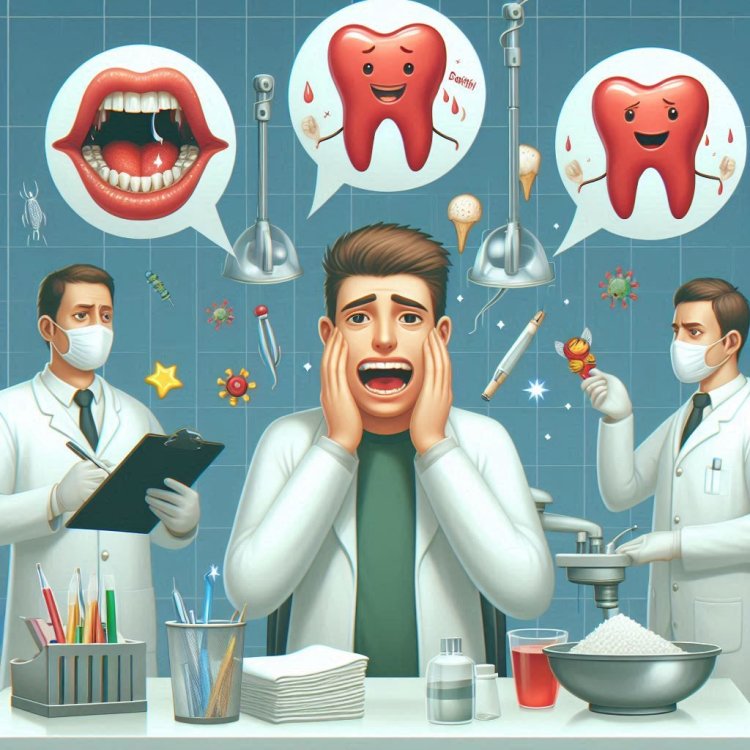Understanding Gingivitis: Causes, Symptoms, and Prevention
Gingivitis is a mild gum disease caused by plaque buildup, leading to swollen, red gums and bleeding. Learn about its causes, symptoms, treatment, and prevention tips to maintain healthy gums.

Gingivitis is a common and mild form of gum disease (periodontal disease) that causes irritation, redness, and swelling of your gingiva, the part of your gums around the base of your teeth. It's essential to address gingivitis promptly as it can lead to more severe gum issues, including periodontitis, if left untreated.
In this article, we’ll break down the causes, symptoms, treatment, and prevention of gingivitis in an easy-to-understand, human-friendly way.
Causes of Gingivitis
Gingivitis occurs mainly due to poor oral hygiene, which encourages plaque buildup on the teeth. Here are the main culprits that lead to gingivitis:
-
Plaque BuildupPlaque is a sticky, invisible film of bacteria that forms on your teeth when starches and sugars from food interact with the bacteria normally found in your mouth. Brushing and flossing daily help remove plaque, but it can re-form quickly. If plaque stays on your teeth for more than two days, it can harden under your gumline into tartar, making it harder to clean.
-
TartarWhen plaque hardens into tartar, it becomes a breeding ground for bacteria. Tartar makes plaque removal more difficult and creates a protective shield for bacteria, leading to gingival irritation and, eventually, gingivitis.
-
Hormonal ChangesHormonal fluctuations during pregnancy, menstruation, or menopause can make gums more sensitive and increase the likelihood of gingivitis.
-
Medical ConditionsCertain health conditions like diabetes, cancer, or HIV can affect gum health, making you more prone to gingivitis. Medications that reduce saliva flow can also contribute to gum disease.
-
Smoking and Tobacco UseSmoking is one of the most significant risk factors associated with gum disease. Smokers are more likely to develop gingivitis than non-smokers due to reduced gum healing.
-
Poor DietLack of proper nutrients, especially Vitamin C, can weaken your gums and make them more susceptible to infections.
Symptoms of Gingivitis
It’s possible to have gingivitis without knowing it, as early stages may not cause pain. However, here are common signs that you may be experiencing gingivitis:
-
Swollen or puffy gums
-
Red or dark red gums
-
Gums that exhibit easy bleeding during brushing or flossing.
-
Bad breath (halitosis)
-
Tender or sore gums
-
Receding gums
-
Soft gums
If you notice any of these symptoms, it’s important to take action early to prevent the progression of gum disease.
Treatment for Gingivitis
The good news is that gingivitis can usually be reversed with good oral care. Here’s how:
-
Professional CleaningThe first step in treating gingivitis is a professional dental cleaning to remove all traces of plaque and tartar. This process, called scaling and root planing, can help reduce gum inflammation and allow the gums to heal.
-
Proper Oral HygieneAfter cleaning, maintaining proper oral hygiene is crucial. You’ll need to brush at least twice a day and floss daily to remove plaque from between your teeth and under the gumline.
-
Antibacterial MouthwashYour dentist may recommend using an antiseptic mouthwash to help reduce bacteria and keep your gums healthy. Antibiotics or other medications may be prescribed in certain instances. The tone of the response text should maintain a professional voice.
-
Follow-Up VisitsRegular dental check-ups are important for monitoring your gum health and ensuring the gingivitis does not return or progress.
Preventing Gingivitis
It is of utmost importance to prioritize the prevention of gum disease in order to uphold oral health. Here are some tips to keep your gums healthy and prevent gingivitis:
-
Brush your teeth properlyUse a soft-bristled toothbrush and fluoride toothpaste. Make sure to brush for at least two minutes twice a day, paying special attention to the gumline.
-
Floss dailyFlossing is essential for removing food particles and plaque between your teeth and under the gums where your toothbrush can’t reach.
-
Regular dental cleaningsVisit your dentist at least twice a year for professional cleanings and check-ups. This will help catch any early signs of gingivitis before it progresses.
-
Use mouthwashAn antiseptic mouthwash can help kill bacteria and reduce plaque formation.
-
Quit smokingIf you are a smoker, ceasing this habit can greatly benefit your gum health. Smoking negatively impacts your immune system and hinders the healing process of your gums.
-
Eat a balanced dietEnsure you're getting enough vitamins and minerals, particularly Vitamin C, to support healthy gums.
Final Thoughts
Gingivitis is a common yet preventable condition that affects many people. By practicing good oral hygiene, visiting the dentist regularly, and making healthy lifestyle choices, you can reduce your risk of gum disease and keep your smile healthy. Remember, early detection and treatment of gingivitis can prevent more serious issues down the road, so don’t hesitate to consult your dentist if you notice any signs of gum trouble.
What's Your Reaction?

















